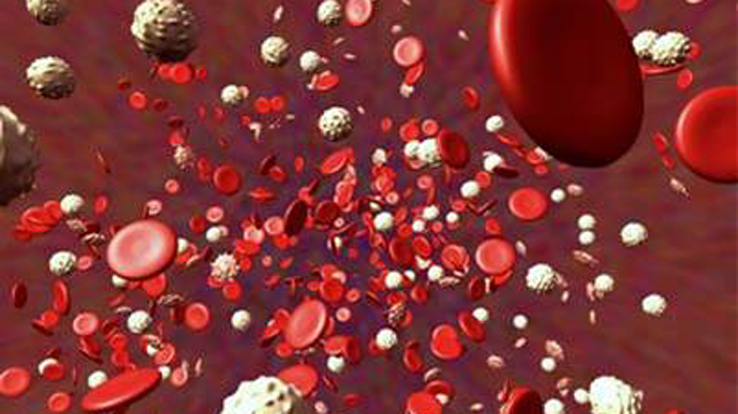
Approximately 15% of men with newly diagnosed prostate cancer have high risk features (defined as stage T3a or higher, Gleason score 8 or greater, or prostate specific antigen (PSA) 20 ng/ml or greater) which increases the risk of recurrence and metastasis. Prostate cancer patients who are a high risk of recurrence after radical prostatectomy do not all follow the same clinical course. One may think that since these patients are classified as high-risk they all will recur, but that is not the case. We propose that there is something fundamentally different at the genomic level in the tumor cells in patients that do recur. GEMCaP, the Paris laboratory’s validated DNA-based signature, was developed to assist with assessing recurrence risk at the time of radical prostatectomy. After surgery, better predictive biomarkers are needed to allow for real-time monitoring for earlier detection of biochemical recurrence (i.e. a PSA rise > 0.2 ng/ml).
Circulating tumor cells (CTCs) are cells shed by primary or disseminated tumors. They are easily obtained with a peripheral blood draw and therefore allow for a minimally invasive way to monitor tumor progression. Multiple studies by us and others have shown that CTCs are detectable in men with advanced, metastatic prostate cancer and that it is feasible to profile these cells molecularly and genomically in clinically meaningful ways. However, studies investigating CTCs in high-risk prostate cancer patients without radiographically detectable metastasis are more rare, with an overall modest detection rate. We set out to determine if CTCs could be detected in the blood of patients after radical prostatectomy, and more importantly, whether they were clinically useful.
By using a non-enrichment based CTC platform that leaves “no cell behind”, we recently demonstrated it is feasible to detect CTCs in this non-metastatic setting. (Friedlander et al., J of Urology, in press) Additionally, we reported success in genomically profiling CTCs from the blood of post-radical prostatectomy patients at high risk of recurrence. In this study, the GEMCaP genomic biomarker set was identifiable in CTCs, and thus may provide additional risk information beyond simple CTC enumeration. GEMCAP has historically been a tissue-based genomic test for recurrence prognostication at the time of radical prostatectomy. This is the first time it was shown to be detectable in single tumor cells in the circulation.
To start to explore the clinical relevance of these detectable CTCs in the non-metastatic setting, we noted a shorter time to biochemical recurrence in men with a higher CTC burden and more CTC copy number aberrations. We are actively seeking to validate these findings. The incorporation of this minimally invasive liquid biopsy test along with PSA as part of the routine 3 month post-radical prostatectomy office visit could help identify which patients post-radical prostatectomy should have immediate adjuvant treatment.